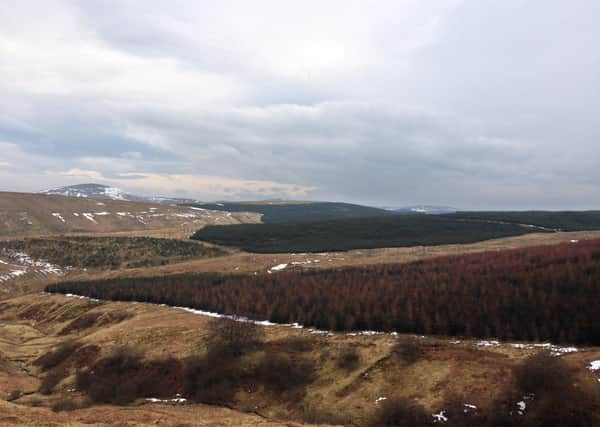Concerns voiced over risk to historic landscape near Hawick posed by UK’s tallest wind farm


Cheshire-based Community Windpower wants to build a 45-turbine wind farm at Faw Side, six miles north of Langholm and 15 miles south-west of Hawick.
The company says the scheme, capable of generating 315mw of green electricity, would bring investment of £256m into the region.
Advertisement
Hide AdAdvertisement
Hide AdHowever, its construction on a prehistoric landscape dotted with Iron Age and Bronze Age scheduled monuments would put numerous historic sites at risk, it is feared.
That’s a concern being voiced by Chris Bowles and Andrew Nicholson, archaeology officers at Scottish Borders Council and Dumfries and Galloway Council respectively.
An environmental impact assessment commissioned by the applicant underplays the intrusion the scheme would have on the cultural heritage of that part of the world, they say.
Residents have also baulked at the scale of the project, consisting of 40 200m-high turbines – four times the height of the Waterloo monument at Peniel Heugh near Jedburgh – with the remaining five standing at 178m.
Advertisement
Hide AdAdvertisement
Hide AdDr Bowles claims there would be potentially major setting impacts on a newly-identified cairn on Pikethaw Hill lying within the proposed development area.
He states: “As it currently appears, the sizeable mound is consistent with a hilltop cairn of neolithic or early Bronze Age date.
“The cairn is partly within both the Borders and the wind farm boundary. The potential significance of the cairn cannot be overstated. If confirmed as a burial cairn, it is a very well-preserved example of a monument that is not particularly common in the area.”
Mr Nicholson also outlines his concerns for a series of ancient Esk Valley forts he fears would be impacted on by the planned wind farm – in particular, Camp Hill, Castle O’er and Bessie’s Knowe.
Advertisement
Hide AdAdvertisement
Hide AdPlans for the wind farm were submitted to the Scottish Government’s energy consents unit in May 2019.
A request for additional information was then made by the unit, including details relating to ornithology, aviation and night-time lighting, and that has now been supplied.
Gillian Cropper, projects director at Community Windpower, said: “This has been formally submitted, and we hope Faw Side community wind farm is now one step closer to a positive decision.”
However, Philip Kerr, chairman of Southdean Community Council, believes the fate of the wind farm bid is still some way off being resolved partially due to the fact they’ll have to wait for a judicial review relating to the Eskdalemuir noise budget scheduled to be held in August.
Advertisement
Hide AdAdvertisement
Hide AdThe Eskdalemuir noise budget places limits on the cumulative impact of seismic ground vibration that can be produced by each wind farm development, and how that budget is divided out is currently a bone of contention.
German-based Energiekontor is taking action against the Ministry of Defence regarding a planning application at Little Hartfell in Dumfries and Galloway, its concern being that the Faw Side scheme is taking up too large a chunk of the allowed noise budget allocation.
Mr Kerr said: “Although Community Windpower says it has moved closer by submitting this additional information, the big issue remains the Eskdalemuir seismic budget. That is complex, with a court case coming up.
“I don’t see any early resolution to those discussions, and the Faw Side scheme won’t make any progress until there is more clarity.”